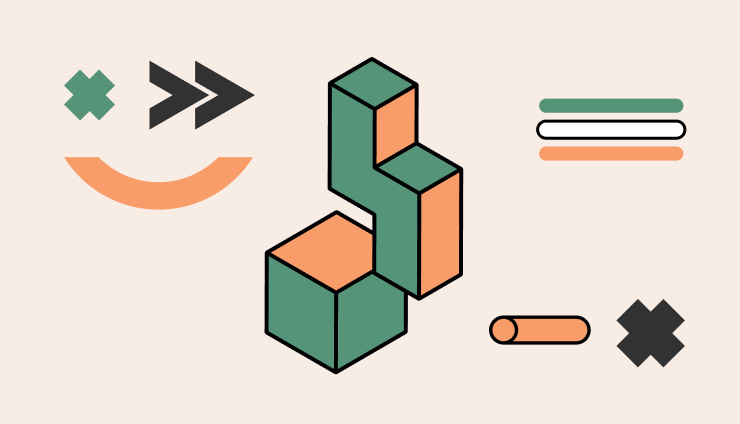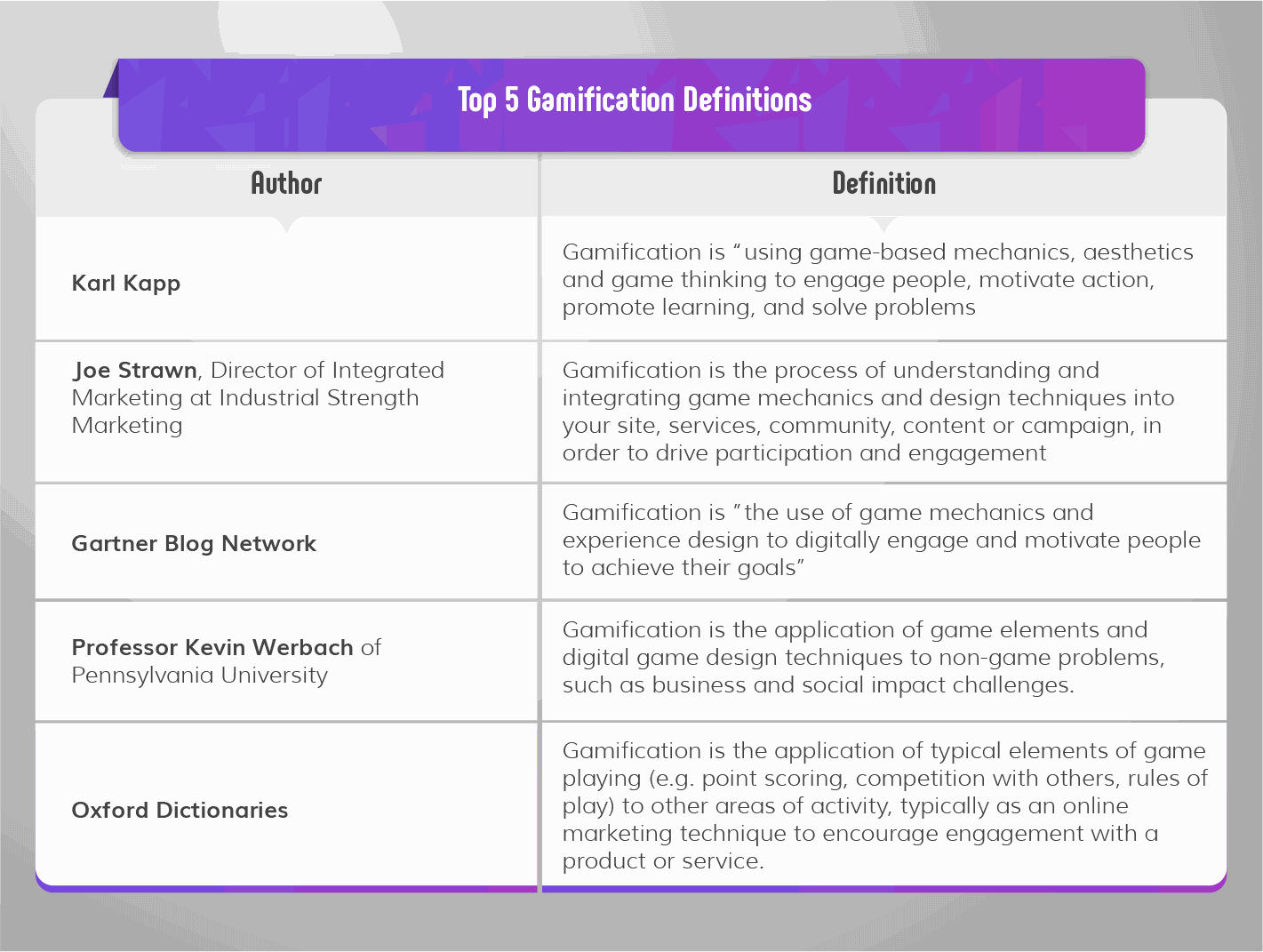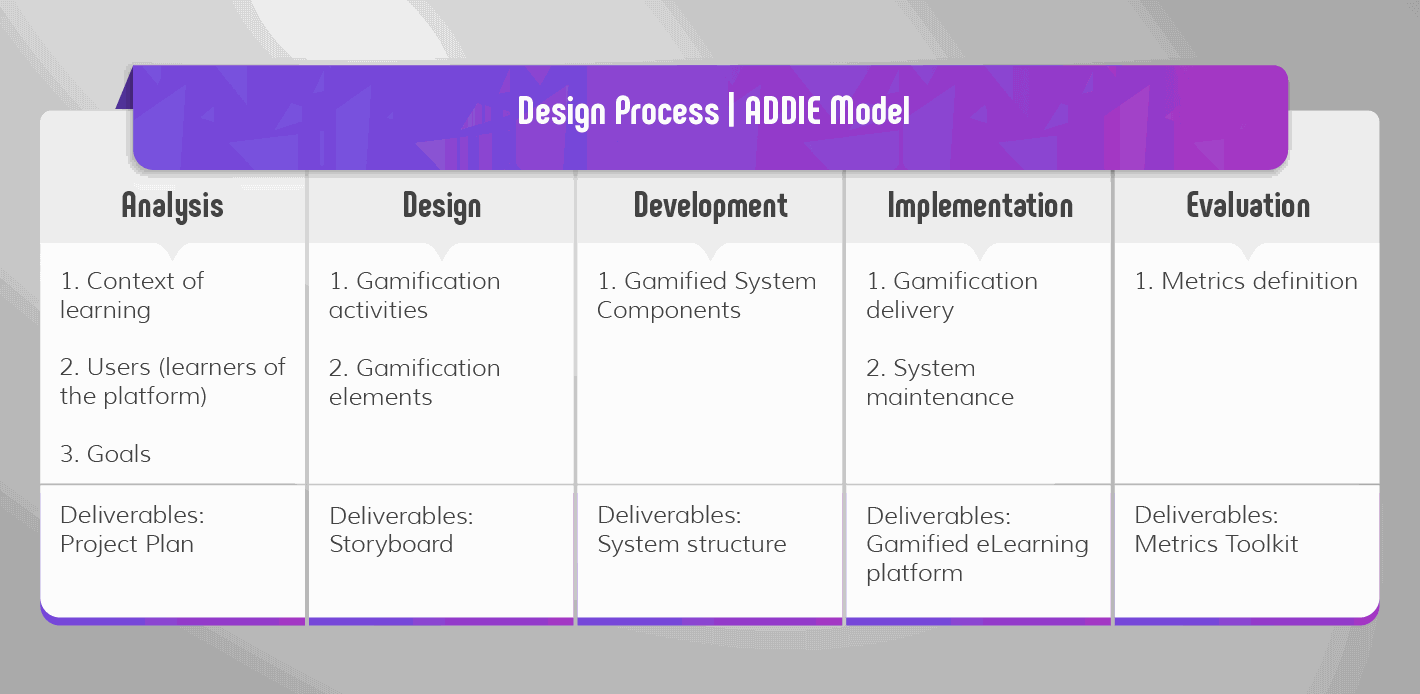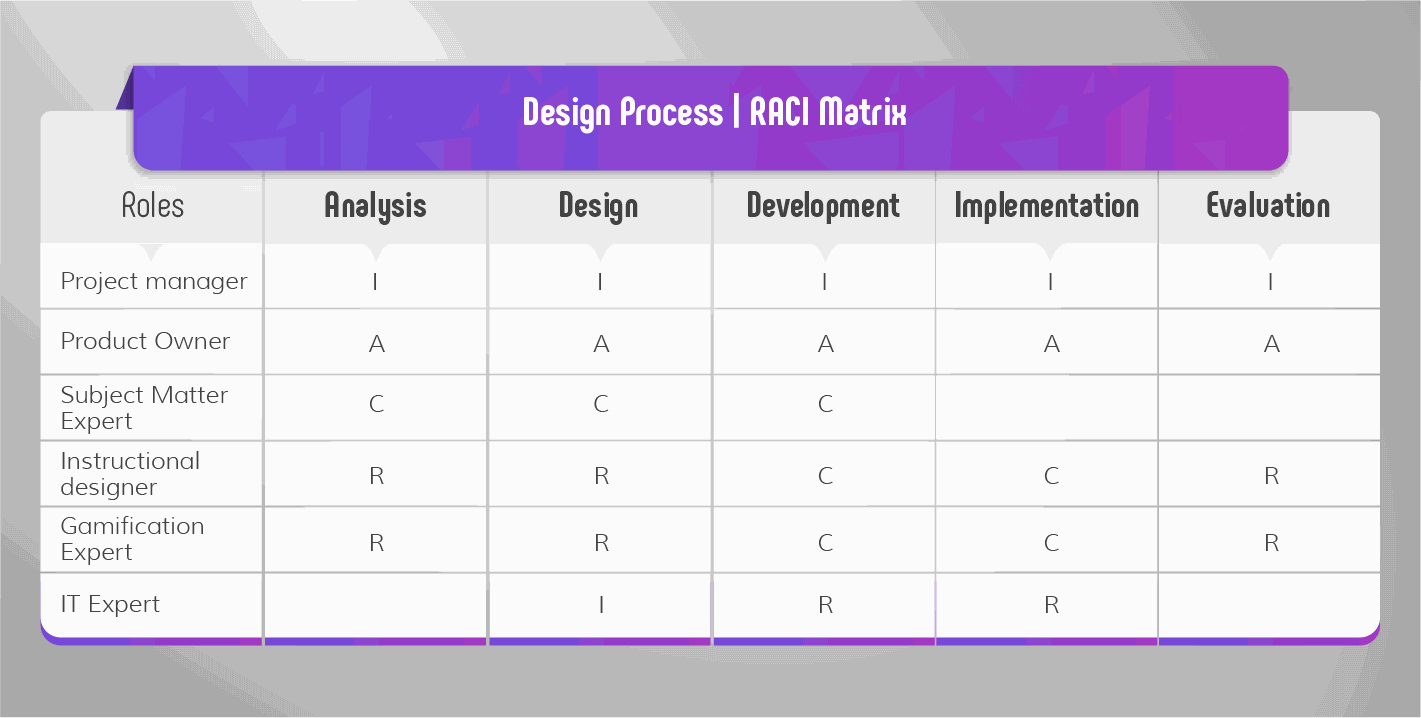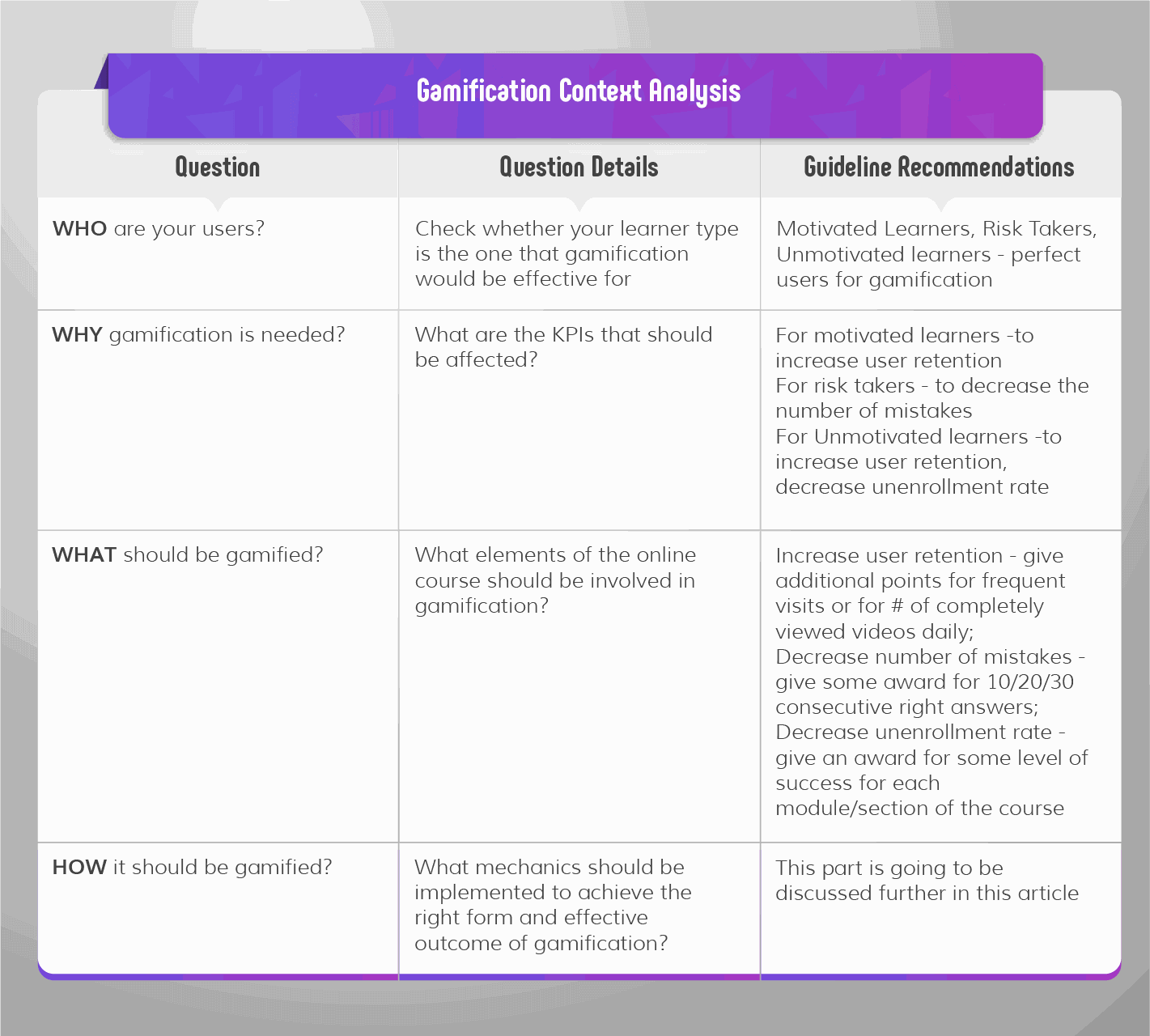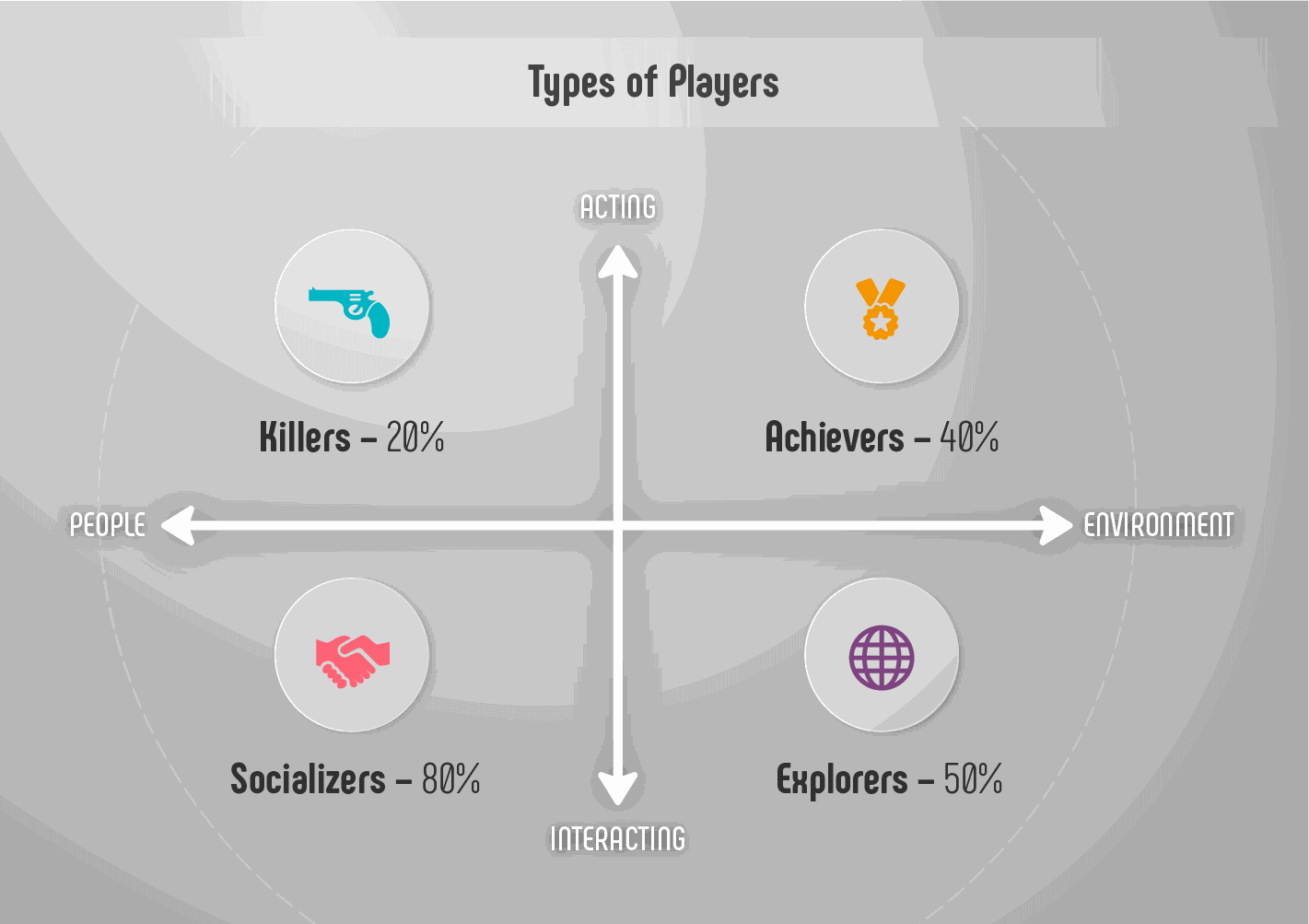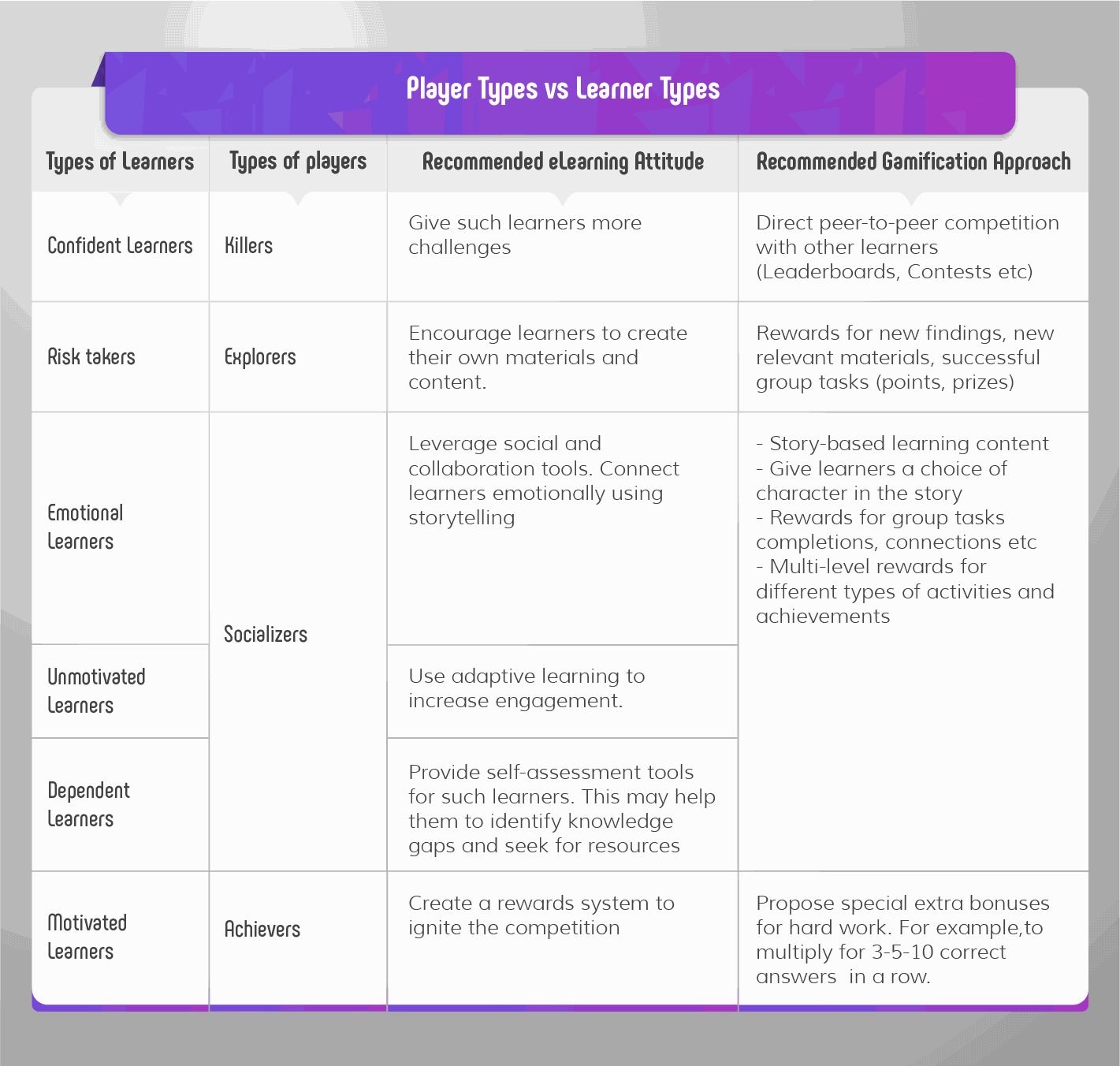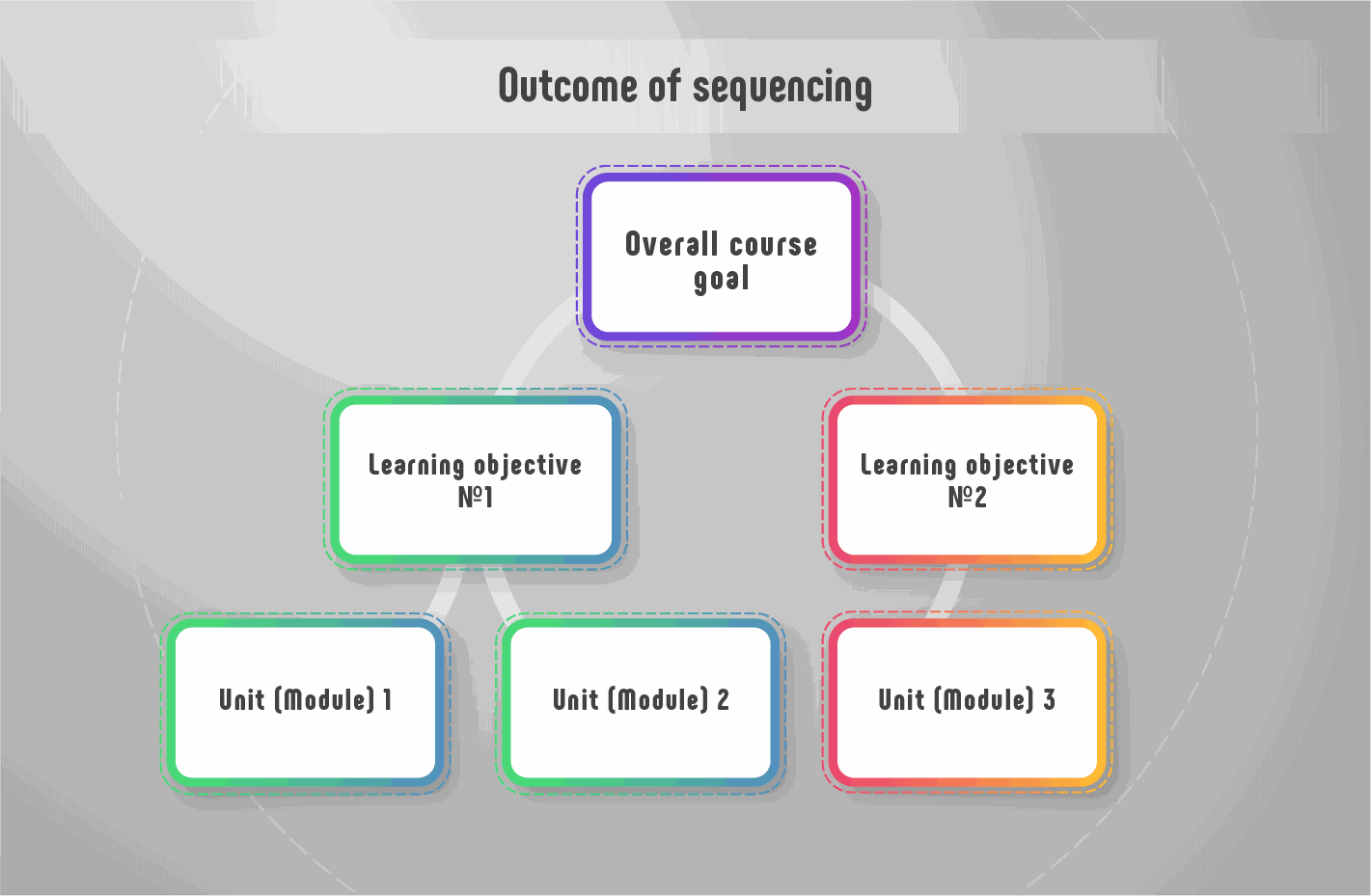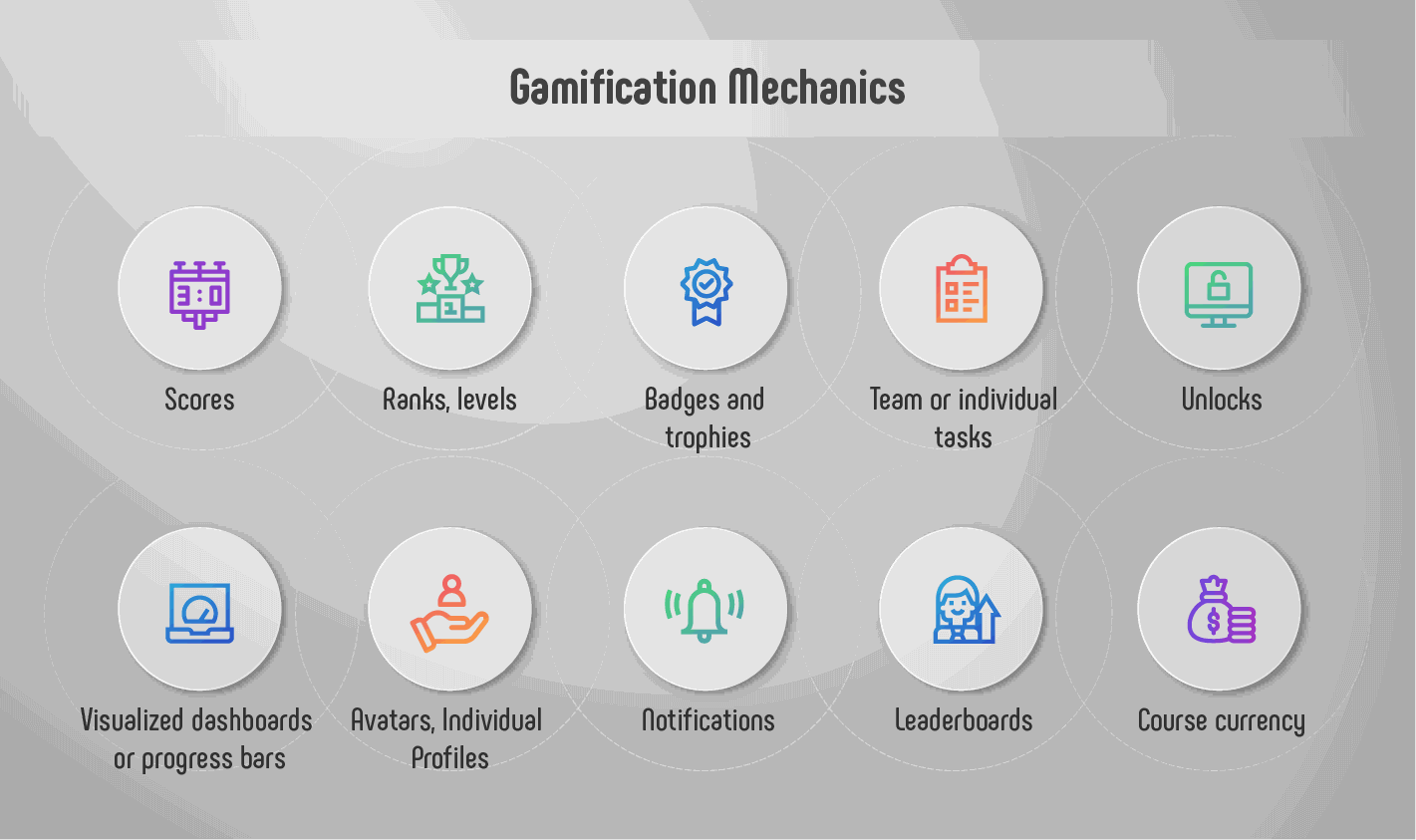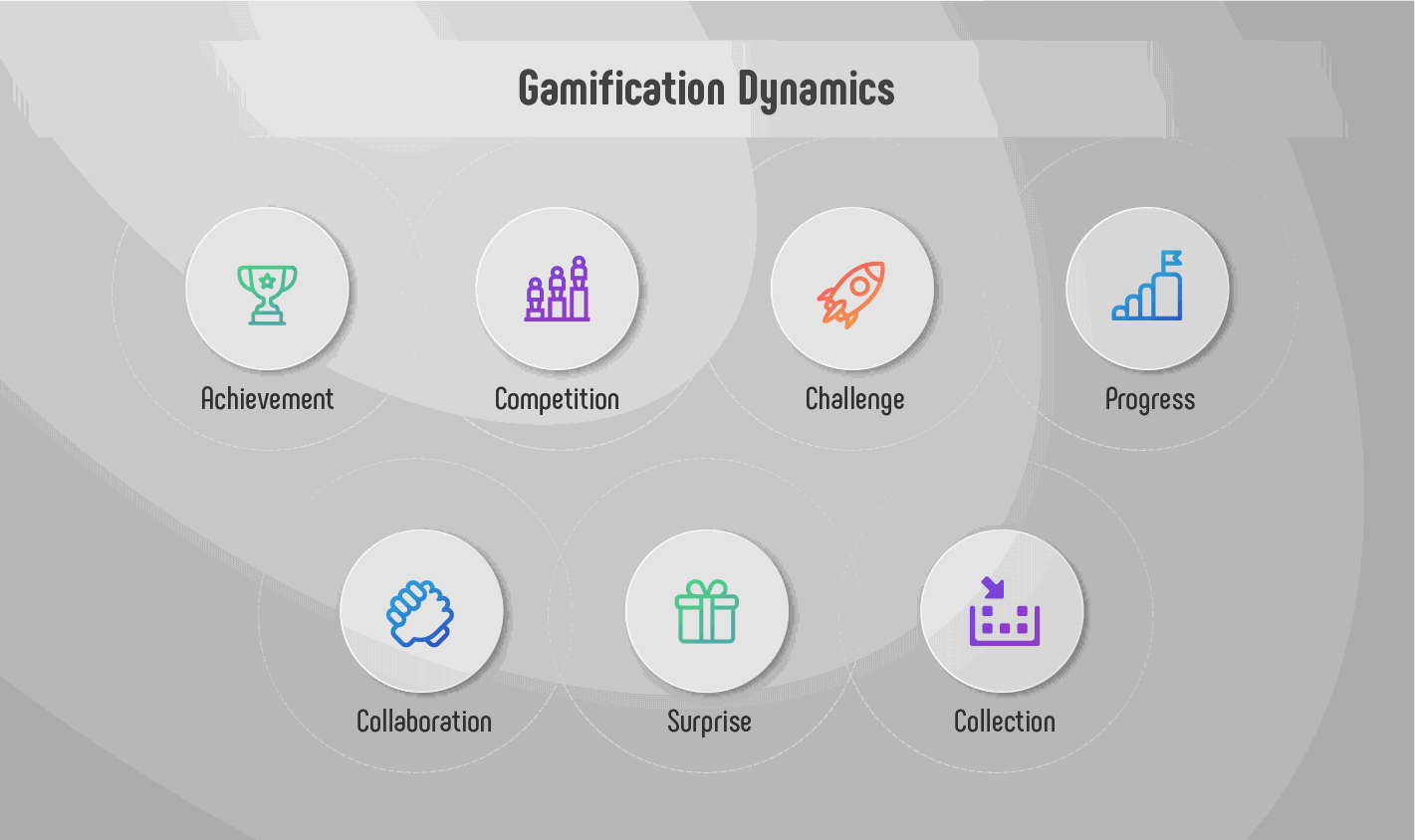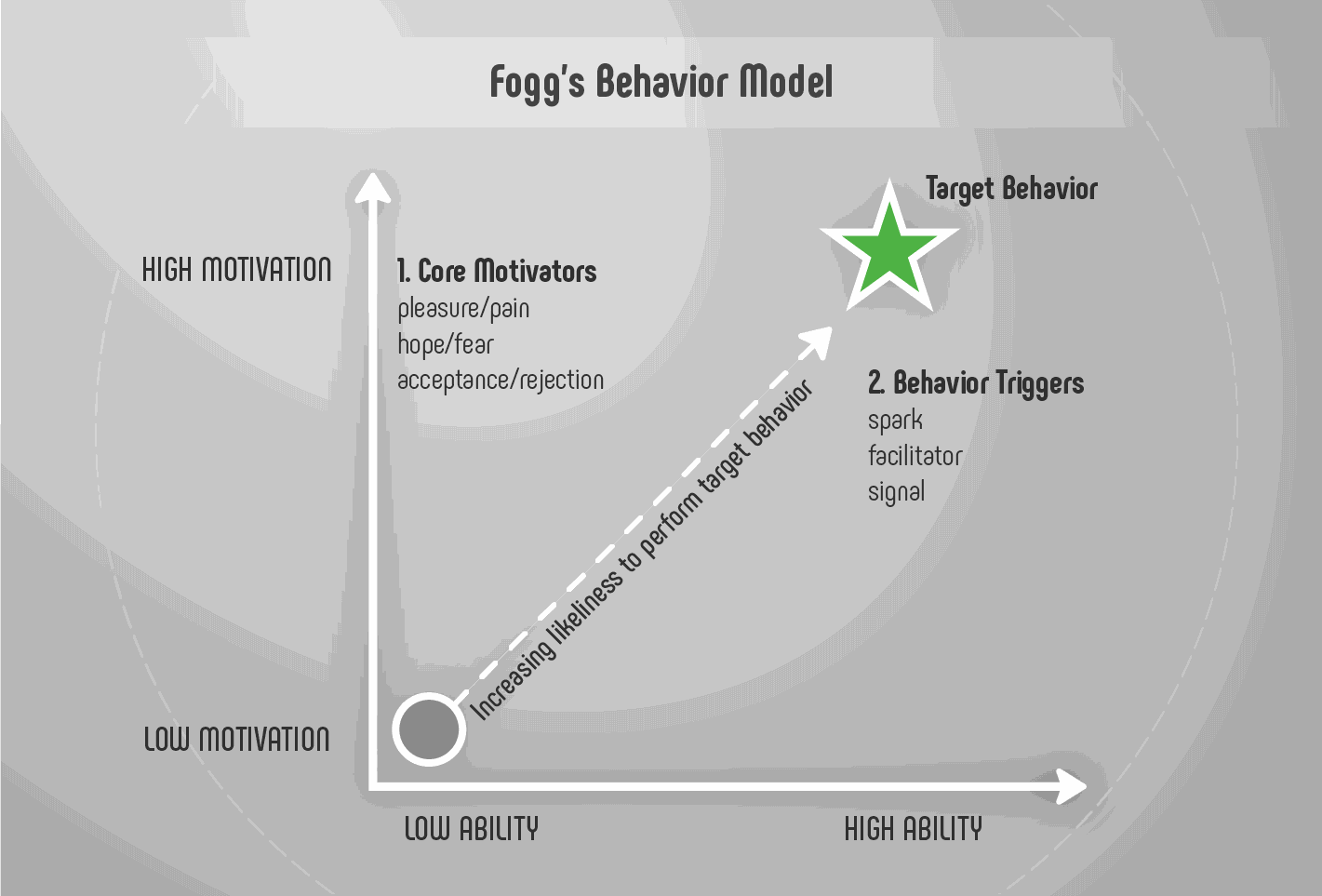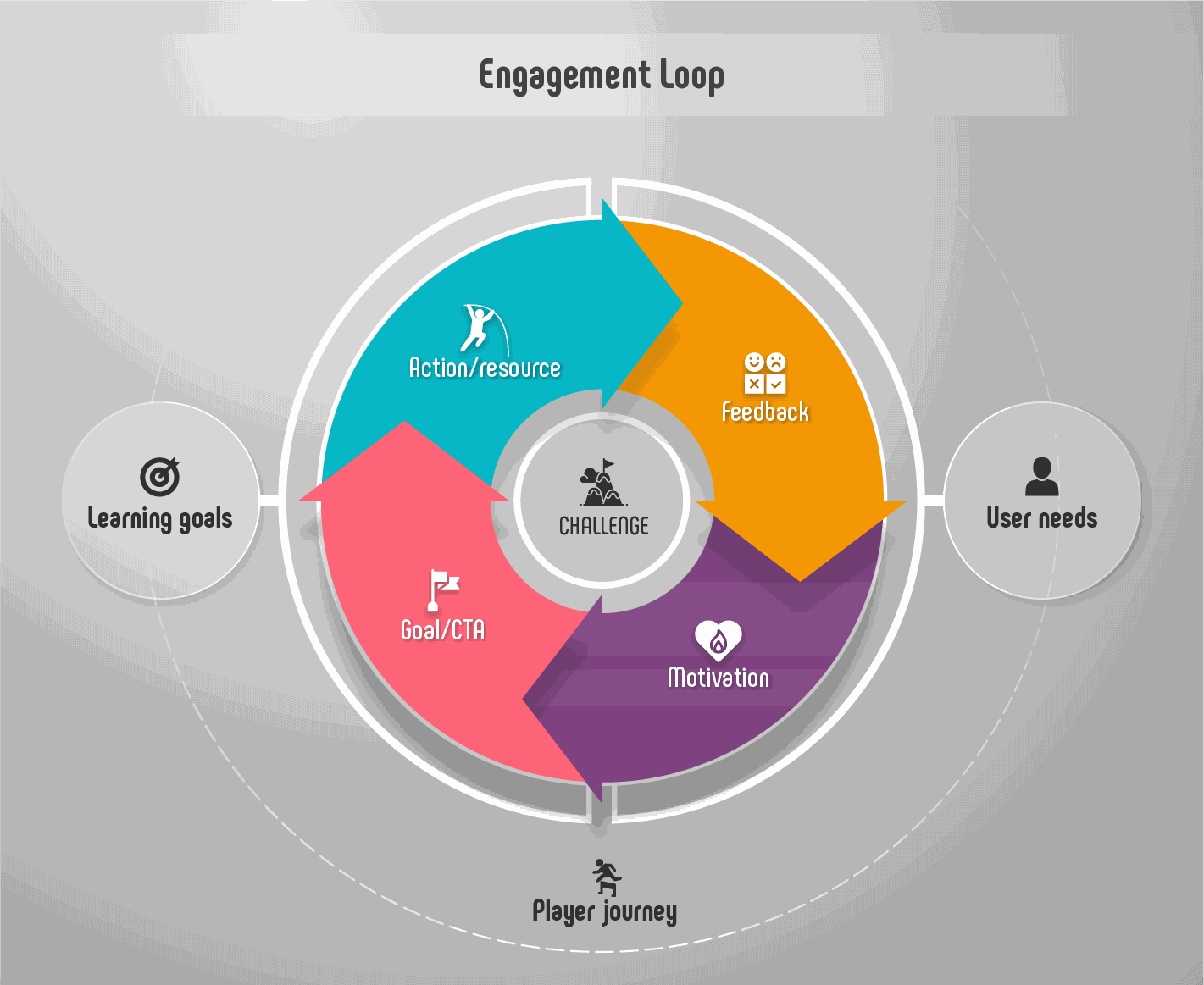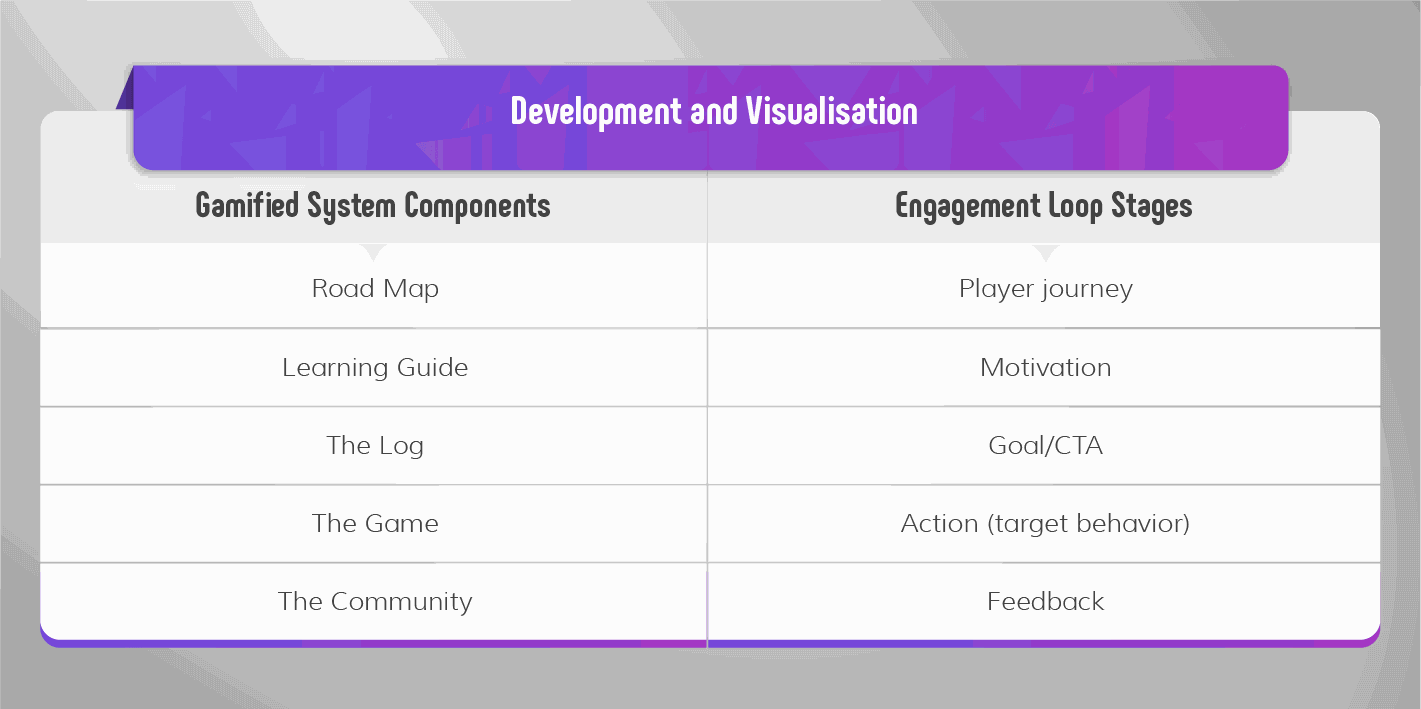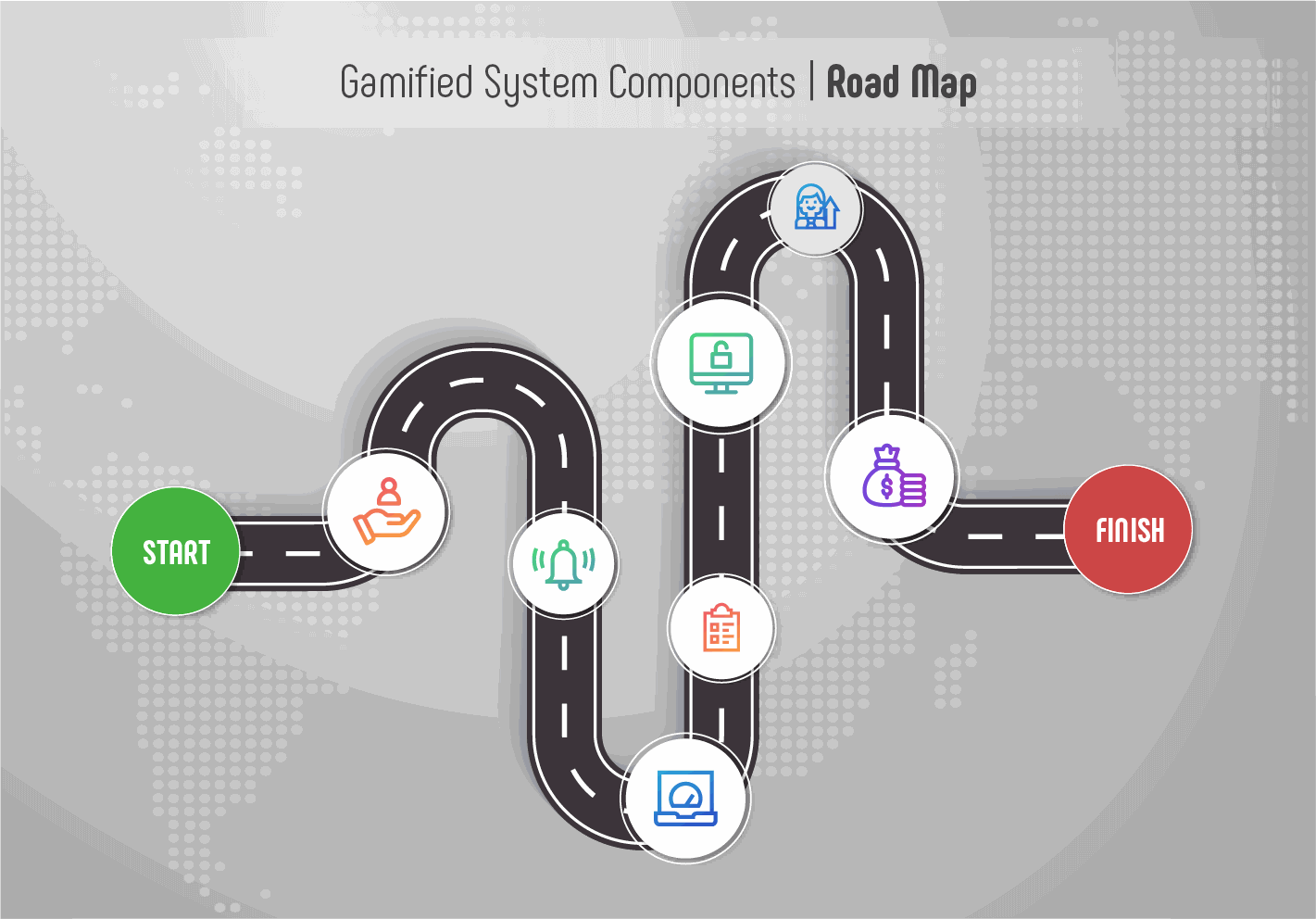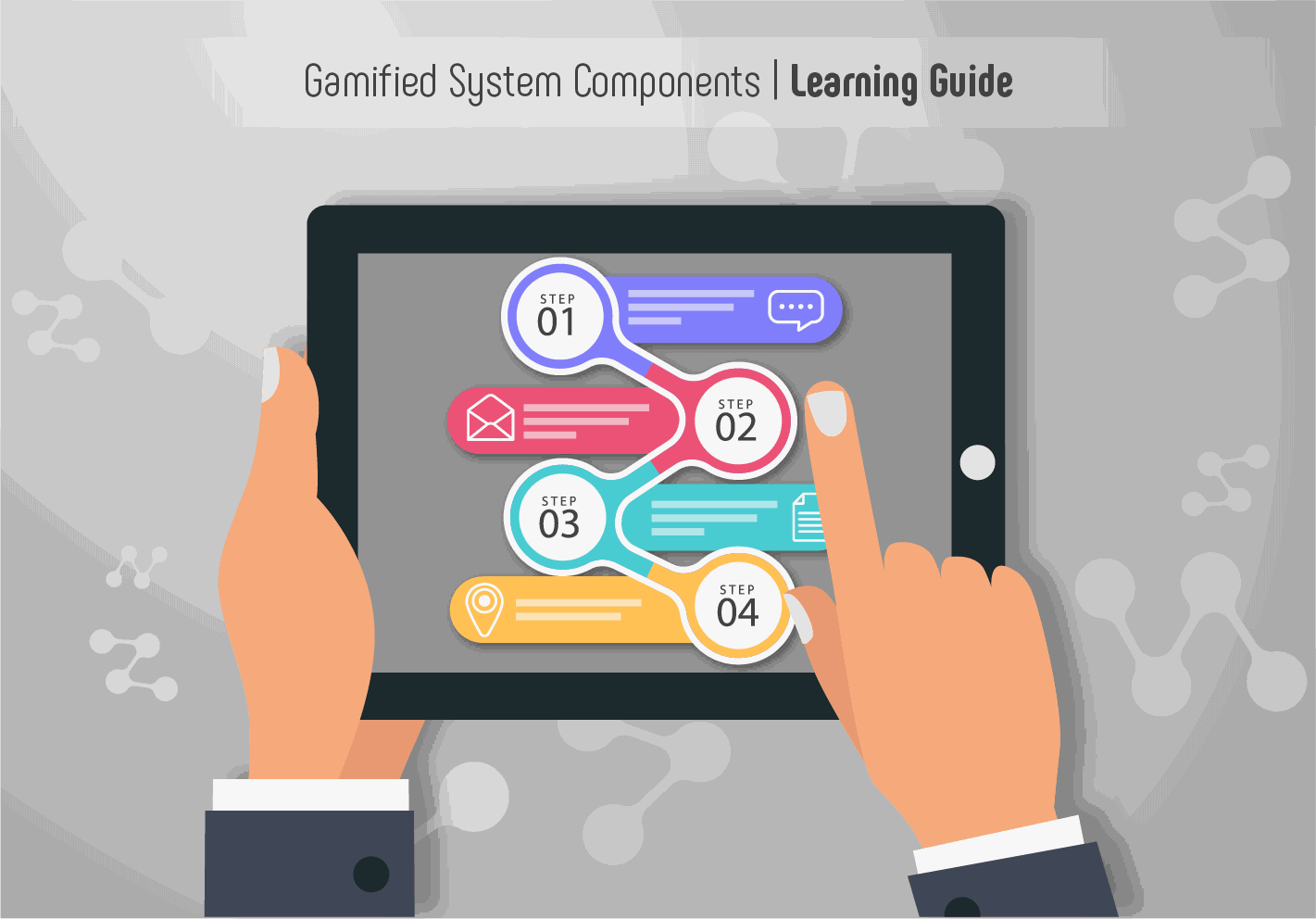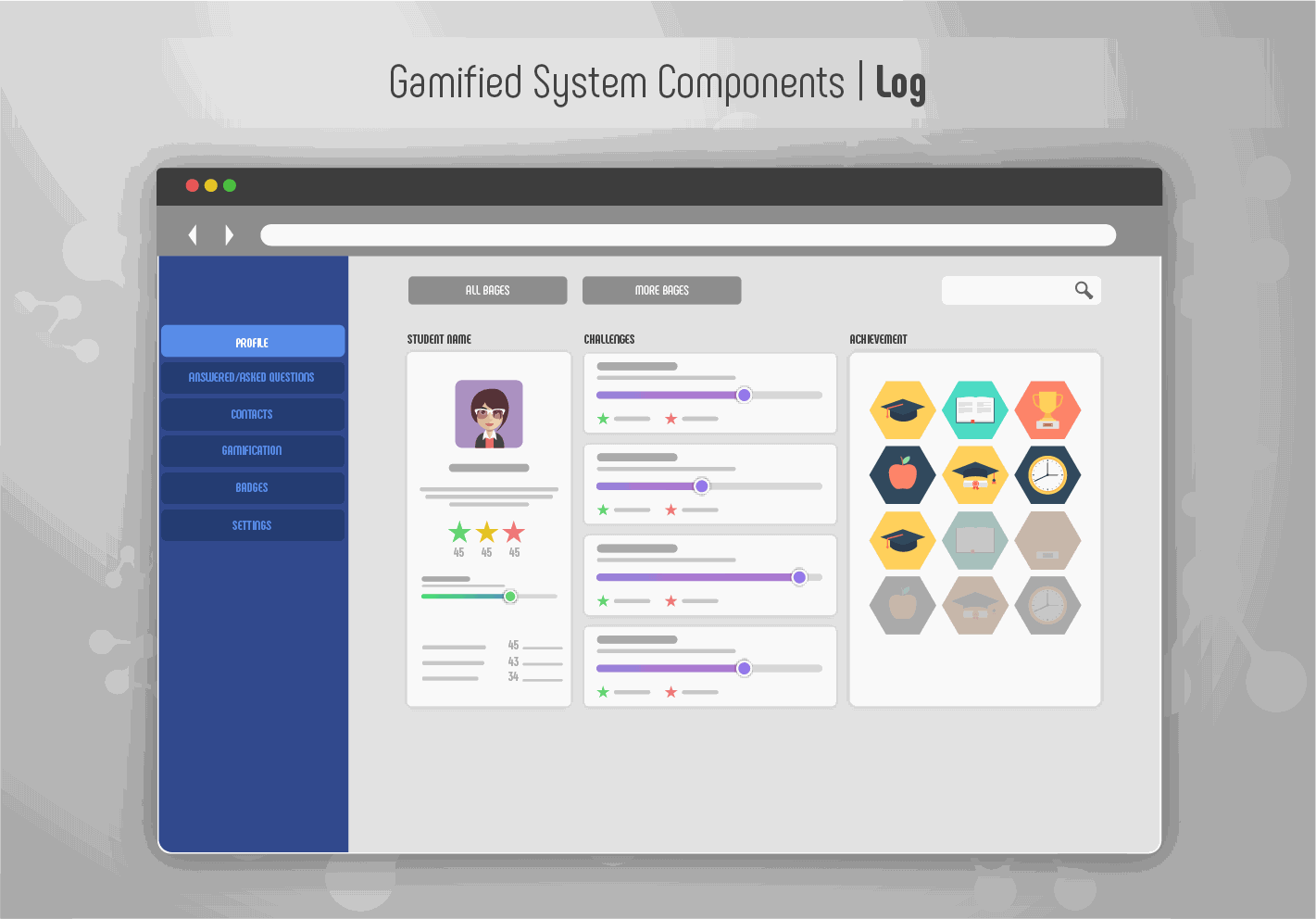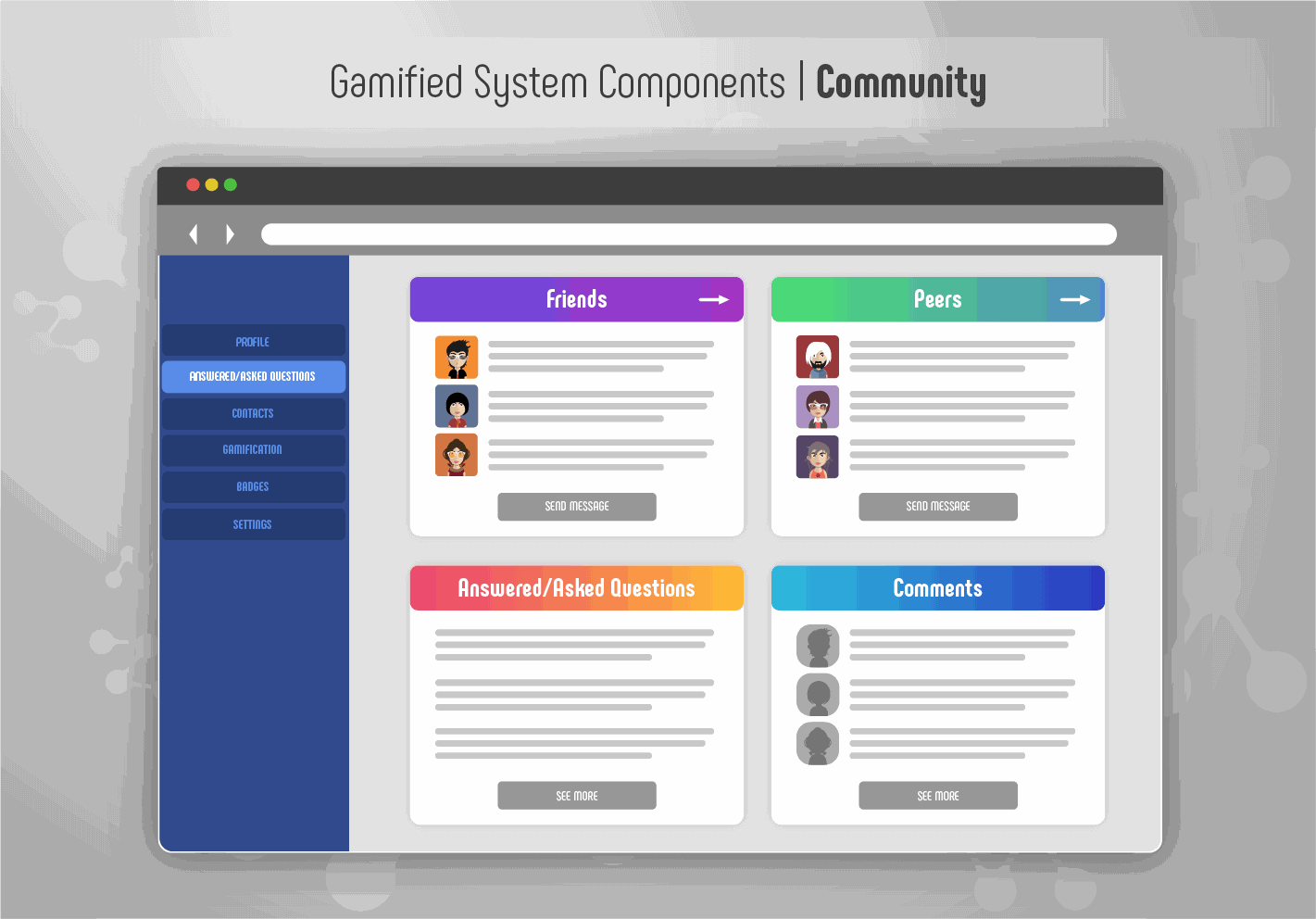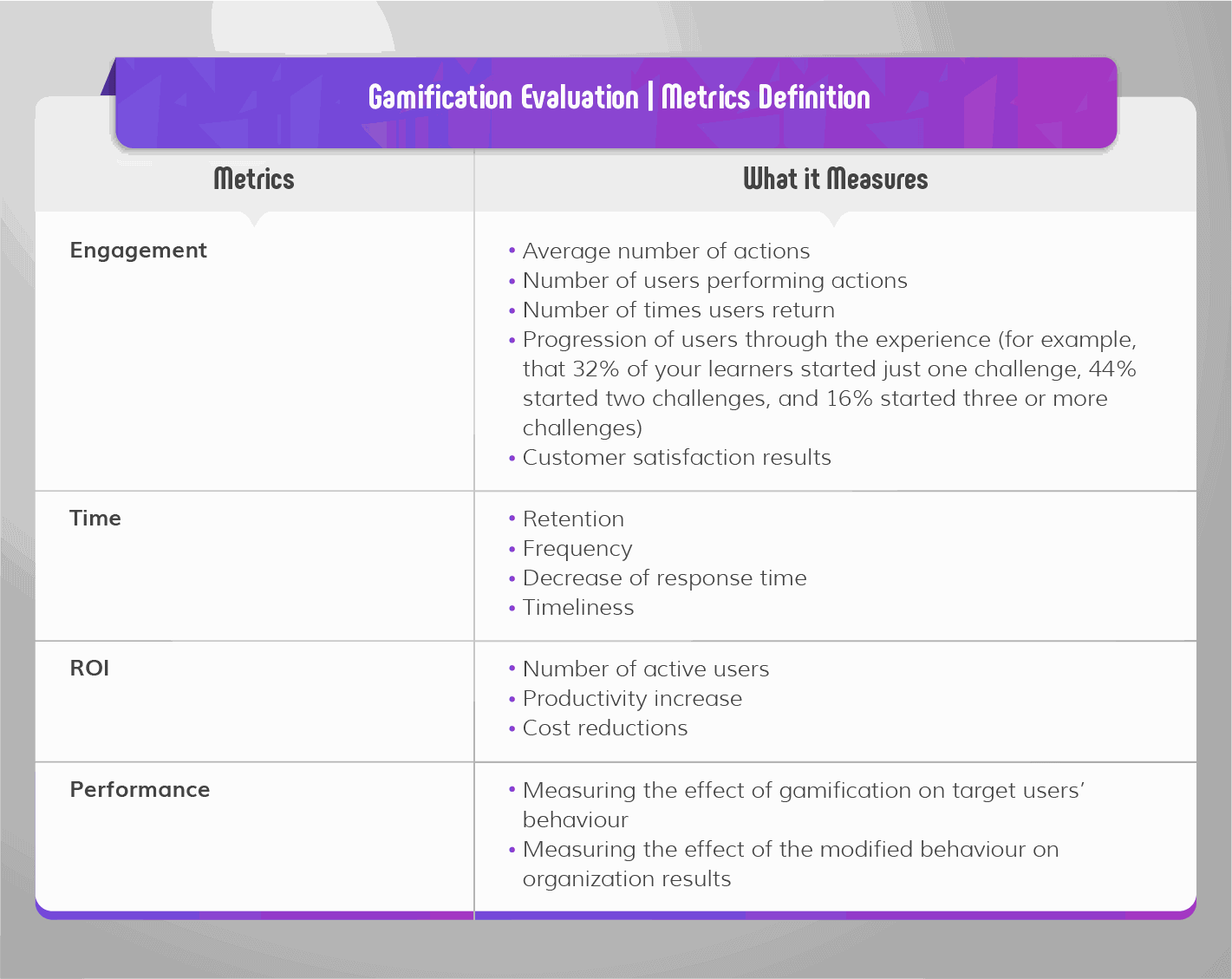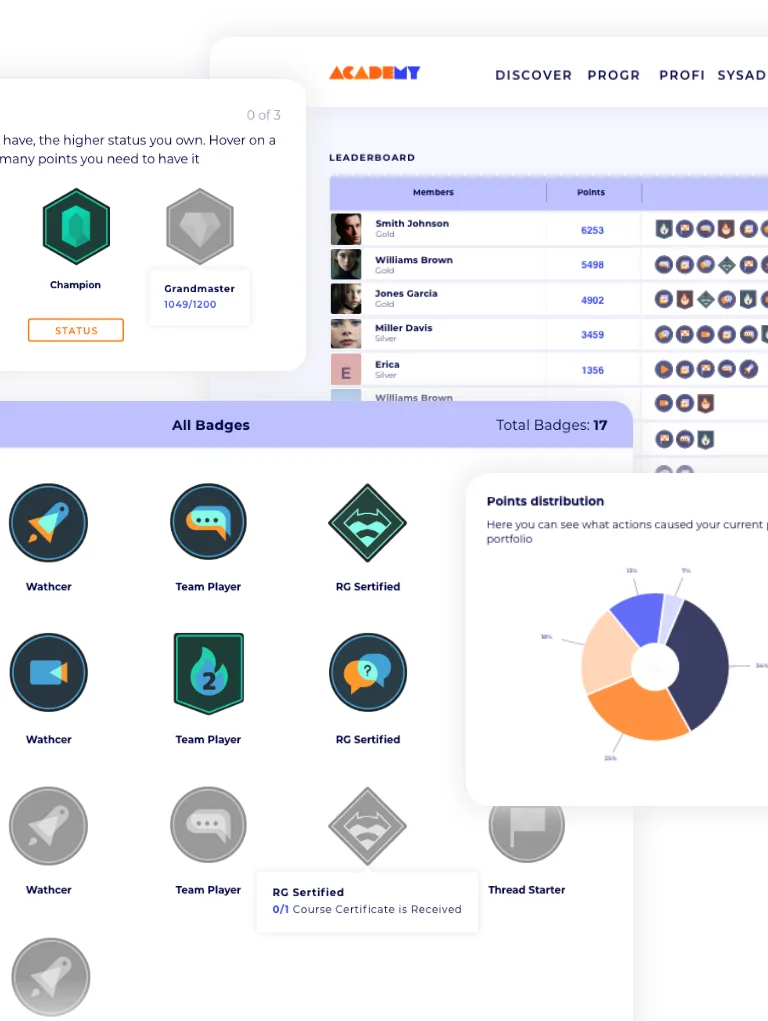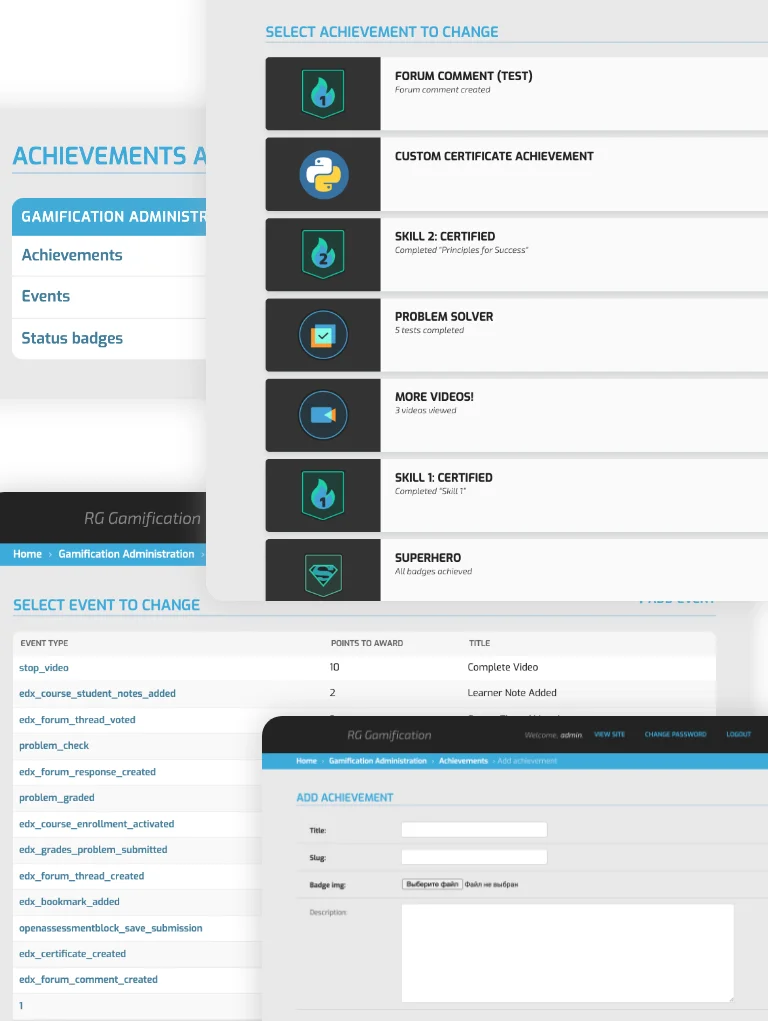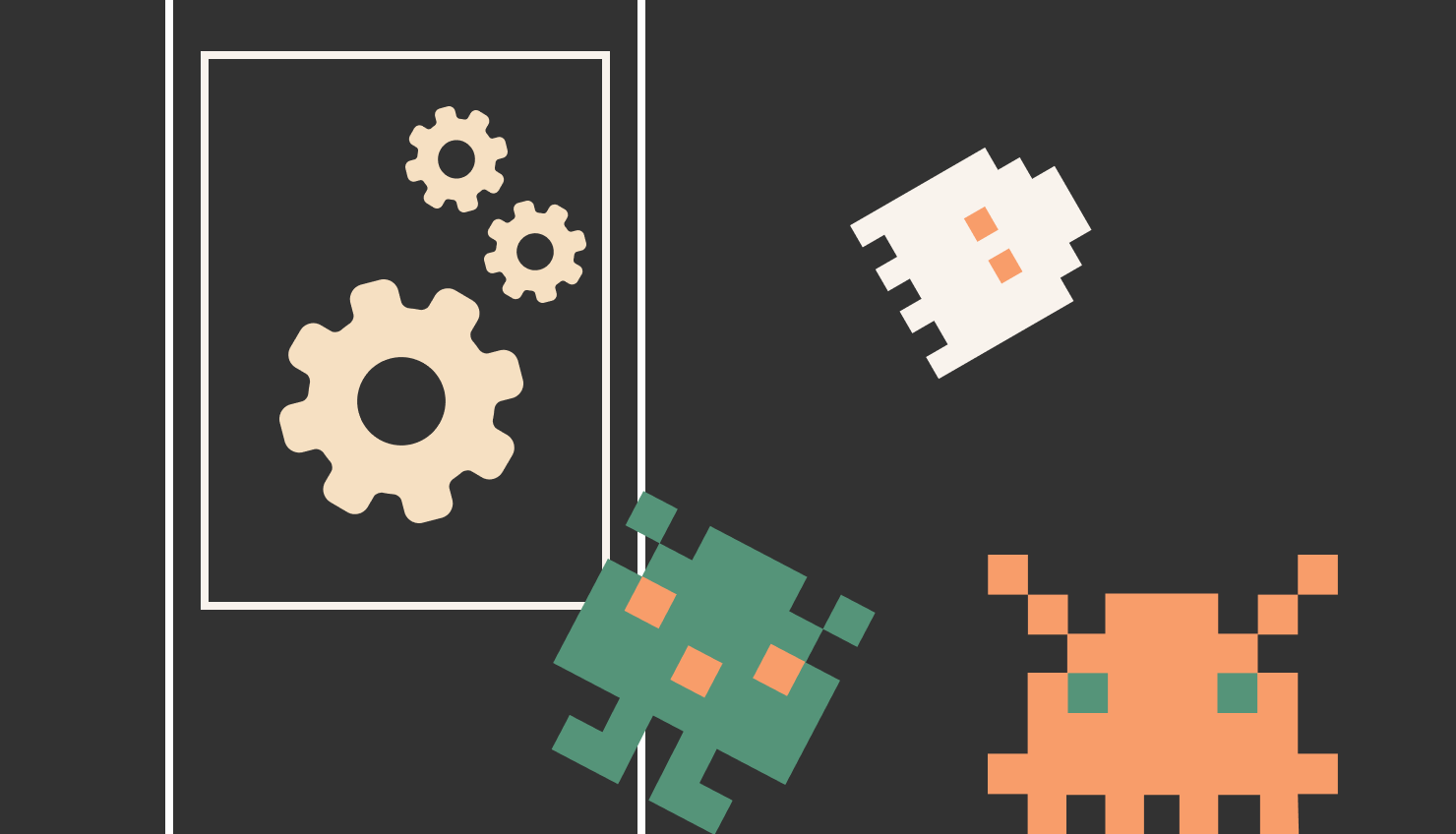Gamification in eLearning today should be the default, not just a nice bonus. Learners nowadays think very differently than before. The average human attention span is 8.25 seconds. Unfortunately, a goldfish, with its 9 seconds in it, is ahead of the curve right now. Fortunately, gamification is the answer to such challenges in learning and thinking.
Think about the last time you played a mobile game or used an app to learn a language. You may not have opened the app purely to learn something new or pass the time. Often, the main incentive is the desire to beat your high score, maintain your winning streak, or unlock a new level. This is gamification at its best.
In this guide, you’ll discover:
- What distinguishes gamification from other approaches to improving learning outcomes
- Benefits of gamification in e-learning
- Core elements of gamification in e-learning
- The best tools and platforms for custom eLearning gamification
What Is E‑Learning Gamification & Why It Matters in 2025
Even the spread of gamification principles in eLearning sometimes does not help to avoid misunderstandings about the definition. What exactly is gamification?
It may be a little boring, but looking up the meaning of a term in the dictionary is sometimes a one-way bet. So, here are the 5 different definitions for your complete understanding.
Now that we’re on the same page about the meaning of the term gamification itself, it’s time to break down the components of its success. First, here are the pillars on which gamification rests:
- Learning
- Engagement
- Motivation
- Reward
- Challenge
- Creativity
- Competition
- Goal-oriented
The second component of gamification success is the benefits you get as someone who integrates gamification into the learning process, particularly in the LMS. We will talk about benefits right in the next section.
Third, these are the fundamental gamification concepts, which are worth paying attention to if you do decide to implement a similar direction in the training of your students, employees, etc. After all, it is precisely the choice of the appropriate concept that will lead to the success of your gamification idea.
Let’s consider everything mentioned in order of priority, step by step.
Core Game Mechanics: Points, Badges, Leaderboards, and Quests
Speaking of the benefits of gamification for e-learning, it is worth understanding the main thing: Gamification for e-learning turns passive learners into active ones.
This transformation for organizations looking for custom e-learning gamification occurs due to the strategic use of game mechanics that tap into learners’ natural motivation to achieve, compete, and progress.
For example, points, badges, and leaderboards create a sense of accomplishment. On the other hand, challenges and rewards keep learners engaged.
| Benefits of Gamification | Results in Education | Persuasive Influence |
| Increased Engagement and Motivation | Game mechanics like points and leaderboards boost motivation. The learning process becomes more interactive. | 68% of students feel more motivated and engaged when using gamified learning |
| Improved Knowledge Retention | Active participation and spaced repetition enhance memory retention and understanding. | Challenge-based gamification improves student performance by 89.45% compared to lecture-based education. |
| Enhanced Collaboration and Healthy Competition | Leaderboards and team challenges inspire social learning and teamwork between participants. | During competitions, participants increase their activity by 23%. |
| Progress Tracking and Feedback | Instant feedback helps learners identify weak areas and improve their skills or performance. | Progress tracking through points and leaderboards increases engagement by 22%. |
| Increased Course Completion Rates | Milestones and rewards encourage learners to complete courses, reducing dropout rates. | Gamification boosted homework completion 56.25% vs. control 18.5%. |
Core Elements of Gamification in E-Learning
Three basic principles of gamification, drawn from motivation and game theory, were formulated by Michelle Schwartz, an Instructional Design and Research Strategist at Ryerson University. These principles are critical to understanding how to use gamification in e-learning.
Autonomy. Learners are more likely to stick to a task when they feel like they are in charge of it. In game-based learning, learners are more engaged when given choices and decisions that impact their next steps.
Value. Good games provide value that is available outside of the game environment. This can mean developing strategic thinking, increasing reaction speed, or simply becoming smarter. In eLearning, the “Value” principle means that learners are more engaged when they feel that what they are learning can be applied in real life. That is why different types of simulations, including VR, are used.
Competence. When students complete a task and move on to the next level, they get a sense of their development as learners. According to JISC, “If you know that something demands hard work as opposed to some talent, you are more likely to keep trying it.” The better learners become at a task, the more likely they are to continue doing it.
“Helps students connect their previous knowledge to what they’ve learned.” – Michelle Schwartz, Instructional Design and Research Strategist.
E-learning Gamification: Design Process (ADDIE+RACCI Model)
Undoubtedly, gamification is a process of enhancing online learning. Therefore, it is an inseparable part of online course development. We have developed guides on how much does it cost to create an online course and how to create an online course platform with a detailed description of processes, roles, and deliverables. So, we are going to map the eLearning gamification development process on the online course development one. Thus, it should follow the same old ADDIE model: Analysis, Design, Development, Implementation, and Evaluation.
And, for role mapping, we’ll use the same RACI matrix, so it can be clearly stated who should do what at each stage.
Is gamification always useful? In many cases, it is. However, in order to deliver ROI, it should affect some particular aspects of learning and certain KPIs. The first stage (Analysis) is the stage where these questions are answered.
Stage One | Analysis (Deliverables: Defined Gamification Strategy and Tactics)
Context Analysis
Different games are created for different users. The same thing can be said about eLearning gamification – its implementation and mechanics should be different for various learner types (learner types are described in our online course creation guide). A learner type defines context and the context is what helps you to decide what to gamify and how to gamify it. The table below can be used as a guide for context analysis:
Context analysis results produce signs of eLearning gamification appropriateness and you’ve defined what KPIs should be affected by gamification. The next step is to define what mechanics to employ to achieve maximum effectiveness from gamified experience.
To do that, you should analyze your learners as gamers or, in other words, define ‘eLearning gamer personas.’
E-learning Gamer Personas Analysis
E-learning gamification will not be effective if you don’t perceive your learners as gamers. To combine a learner persona and a gamer persona, we recommend using a mix of player types theory and mapping it on learner types.
Additional questions:
- What are Reinforcement Strategies in eLearning?
- How to engage students in learning?
- What motivates millennials while they learn?
Player Types
Richard Bartle studied players of MMOGs (massively multiplayer online games) and, based on that, identified four types of players that he placed on two axes:
- People → Environment (player can focus on the game environment or, as an opposite, on other players)
- Acting → Interacting (player can focus on acting, e.g., hitting the target or interacting like in social games)
Below, you can see more detailed descriptions of each player type.
- Explorers like going out into the world to bring things back to their community and exclaim, “I discovered this thing!” One example of a game suited to the explorer player type was PokemonGo. A player had to play many games to find every hidden Pokemon.
- Achievers are an integral part of any competitive game. They drive a lot of projects, services, and brands. The problem with game design for this player type is that it’s difficult to develop a system where everyone can win and achieve. And for achievers, losing the game will likely cause them to lose interest in playing it.
- Socializers are people who play games for the benefit of social interaction. Games focused on socializers comprise some of the most popular games throughout history – dominoes, bridge, mahjong, and poker. For socializers, a game is just a background for meaningful, long-term social interactions.
- Killers make up only a fraction of all of the player types. However, it’s important to understand them. They are similar to achievers in their desire to win, although, unlike achievers, winning isn’t enough. Not only must they win, but they also need to see somebody lose.
How to apply the knowledge of player types to gamify eLearning in the most effective way? To do that, you need to map gamer types on learner types.
Player Types vs. Learner Types
Let’s see which types of learners match with which types of players:
After completing your learner analysis, which is described in detail in our online course creation guide, you can determine what types of players your learners are and which gamification approaches would be best suited for them. By doing so, you can identify the KPIs that are most likely to be improved with gamification and formulate your general eLearning gamification strategy and tactics.
Once you have developed your overall approach, you can start to focus on how and where gamification should be incorporated into your online course content.
Stage Two | Design (Deliverables: Gamification plan)
Gamification is going to be an essential part of learning content, so it needs to be planned during the Design stage of your online course development. In other words, the eLearning gamification design has to be fully aligned and integrated with online course design, including:
- Gamification tactics and tools needed to positively affect KPIs that reflect Learning objectives
- Tactics and tools aligned with your course sequence
- Tactics and tools complying with instructional strategy
- To know more about learning objectives, course sequence, and instructional strategy for your online course, please refer to our “Online Course Creation Guide” part “ADDIE stage 2: Design”
Where to start? Start with your online course sequence:
Before implementing gamification in an online course, you should have:
- Analyzed your learners and determined what type of players they are.
- Identified course learning objectives and determined how to deliver content.
- Decided on appropriate gamification approaches and their potential impact on KPIs.
However, at this stage, you still need to determine how to implement these approaches. This includes choosing which gamification tools to use, such as badges, leaderboards, or contests, and deciding where they should be implemented. These tools are the building blocks of a gamification plan.
Gamification Elements
Any leaderboard, badge (and similar things given to learners), every “gaming character,” “status,” and “rating” is a gamification element. And any gamification element can be defined from two perspectives: Mechanics and Dynamics.
Game developers suggest that game dynamics combines players’ (learners’) behavior and emotions, which game mechanics and interaction with other players (learners) create. Game dynamics motivates players to continue playing or learning.
Combinations of mechanics and dynamics are actually ways to introduce gamification in learning projects. You may introduce:
- Group competition to unlock some particular team task completion, which will give a team an additional amount of course currency to buy some real-life trophies (This would work for Achievers and Killers to increase retention and course completion rates).
- Individual profiles with avatars change when a learner gains a high score (for successful completion of certain types of problems) and gets a new status (This would work for Socializers to increase retention).
- Leaderboard based on a maximum score after the course completion; top-5 get real-life trophies and such achievement is reflected in their individual profiles (Achievers, Socializers, Explorers).
- Challenge to finish a module in half of the default time with the highest score that will be doubled (Killers, Achievers).
The list can be infinite. The “Mechanics-Dynamics” matrix is a great way to spark imagination and create engaging eLearning gamification elements — you are only limited by:
- Your course goal.
- Your learning objectives.
- Your players’ profiles.
- Your technological constraints (we are going to discuss it in the Development phase).
One more thing that is going to help you in planning gamified experiences throughout your online course is a psychological background of gamification — it will help you to keep the balance and avoid overloading your students with different elements while keeping them engaged.
Fogg’s Behavior Model and Engagement Loop
Each of us has tried computer/mobile games. Some of them are dead easy. Another one is intricate. Some of them capture all your attention, and you want to get back to the game again and again.
How to gain such a level of engagement? There are two concepts: Fogg’s behavior model and the “engagement loop.”
Fogg’s behavior model (FBM) makes it easier to understand a player’s (learner’s) behavior. As shown in the image above, there are three key factors that define an individual’s behavior:
- Motivation — the main reason why an individual is encouraged to perform some action (pleasure, pain, hope, fear, acceptance, rejection).
- Trigger — internal or external signal right after which the action is performed (cue, reminder, call to action, etc.). The most important aspect of a trigger is timing.
- Ability of an individual to act (performing factors can include time, money, physical effort, brain cycles, social deviance, and non-routine). Without an ability, motivation decreases, and sensitivity to triggers reduces.
Behavior scientist BJ Fogg emphasizes that it’s important to realize that people are naturally lazy. They feel resistance when there is some need to put in an effort, and this is also true when it comes to learning. Doing something uncomfortable and dealing with procrastination is much easier when:
- There is motivation (directly connected with learning objectives or personal learner/player persona characteristics).
- There is ability (time, conditions, understandable rules…).
- There is a perfectly timed trigger (notification, leaderboard, progress bar…).
Modern professional instructional designers can help in the implementation of these principles.
Engagement Loop
The engagement loop principle is similar to Fogg’s behavior model. It only adds three additional “layers”:
- The feedback that a player (learner) leaves after any action.
- Player (learner) journey: the stage where a player/learner is currently situated.
- Loop: Every feedback after an action requires subsequent motivation.
Designing engagement loops is not an easy task that can be provided again by advanced instructional designers and gamification specialists.
Stage Three | Development (Deliverables: Gamified System Structure)
By understanding gamified app elements (mechanics and dynamics) and engagement loop stages, we can move further to the development of a gamified system structure.
It is worth noting that game design specialists divide the development process into two parts:
- Storyboard creation.
- Graphic sketch creation.
The development of the structure for the eLearning gamified app also contains these parts. Nevertheless, it includes some additional components and properties. Here are some infographics below, which show what gamified components are and how they fit in with the engagement loop stages.
To effectively gamify your eLearning course, it’s important to understand the different components that make up a gamified system. Let’s take a look at each gamified system component separately:
1. Road Map: This component provides a clear visualization of learners’ current status and progress and works as a tool for providing direct feedback for other components.
2. Learning Guide: This step-by-step learning guide provides an efficient introduction to increase understanding of the gamified app and how to use the system.
3. Log: This tool allows users to easily explore their log and see how each task correlates to personal goals and the road map, providing an overview of how tasks are affecting one’s position according to their personal goals.
4. Community: This component provides implemented support for user-to-user feedback throughout the gamified system through comments, discussions, and knowledge sharing, providing an additional feedback system that will provide meaningful feedback instantly.
5. Game: The final component is a grouping of motivational mechanics whose purpose is to motivate and promote general usage of the system. These mechanics may include avatars, customizable elements, progress bars, coins, badges, and other traditional gamification elements.
All of these components make up your gamified system structure, which you should use in the next stage, “Implement.”
Stage Four | Implement (Deliverables: Gamified eLearning Platform)
An implementation of the developed gamified system structure is the most complex process, which includes iteration of programming, graphic design, prototypes, and system testing.
Therefore, if you don’t have a gamified eLearning platform and you don’t have enough assets to implement it, we recommend you look at “ready-to-go” solutions.
There are more than 100 gamified platforms on the Web. To decide which one meets your requirements, you need to check out the main gamified components mentioned in stage 2. Among them are:
- Points — Badges — Leaderboards (PBL).
- Progress Tracking and Reporting.
- Rewards.
- Customization Options.
Stage Five | Evaluate (Deliverables: Metrics Toolkit)
What is the purpose of the evaluation?
Evaluation of your gamification outcomes can give you a powerful impulse for further custom eLearning development. You can tailor your content to become more attractive, effective, and profitable. Bear in mind that there is no clear definition for evaluating the efficiency of gamified applications, and metrics are vague (the evaluation process can vary depending on your type of application and the chosen strategy). We have therefore sought to organize all possible metrics and principles.
The main drawbacks of these metrics are unclear figures and long analysis. That is why it is a good practice for a custom eLearning gamified app to create metrics that will perfectly fit both the gamified app and the chosen eLearning strategy.
Tools and Platforms for Gamified E-Learning
A gamification e-learning platform can vary in cost, built-in capabilities, and customization. E-learning gamification companies offer many tools out of the box, each designed to enhance engagement and improve learning outcomes.
| Platform | Key Gamification Features | Best For |
| Open edX | Custom gamification, certificates, and interactive course elements | Higher education institutions, large-scale training providers |
| Moodle | Badges, leaderboards, points, and interactive quizzes | Schools, universities, and corporate training programs |
| TalentLMS | Gamification out-of-the-box with levels, points, badges, and progress tracking | SMBs, corporate training, onboarding programs |
| SAP Litmos | Built-in leaderboards, achievement tracking, and reward systems | Enterprises and compliance training |
| EdApp | Microlearning with gamification, including spaced repetition, quizzes, and real-time feedback | Mobile-first learning and employee training |
How We Do Gamification in Raccoon Gang
In addition to the comprehensive guide, we want to share how Raccoon Gang approaches gamification. We believe that gamification is an effective tool for engaging learners and improving learning outcomes, which is why we have developed our e-learning gamification software.
RG Gamification lets Open edX platform managers use much more gamification mechanics as opposed to native Open edX abilities. Being customization and integration-friendly, the tool makes online courses more engaging, effective, and memorable.
Leaderboard, Badges, Achievements
Admin-friendly Interface
Conclusion
Here it is. Now, you have a comprehensive guide to gamification for eLearning in one place. After your first run through the five stages outlined in this post for the gamification design process, it will become increasingly easier to build your future gamified platform.
REFERENCES:
- The International Journal of Advanced Computer Science and Applications, Vol. 6, No. 2, 2015. “Study of Gamification Effectiveness in Online eLearning Systems”
- The 51st Hawaii International Conference on System Sciences (HICSS). “A Theory of Gamification Principles Through Goal-Setting Theory”
- Free online course from The Georgia Institute of Technology. “Accessible Gamification for Business”
- Kristoffer Frang and Robin Mellstrand, Lund University. “Enterprise Gamification of the Employee Development Process at an Infocom Consultancy Company”.
- Janaki Mythily Kumar. “Gamification at Work: Designing Engaging Business Software”
- Neil Davey. “Gamification: The metrics and measurements that matter.”
FAQ
What is eLearning gamification?
Why is gamification important in online learning?
What game elements are most effective in gamified courses?
Common effective elements include:
-
Points for progress tracking
-
Badges for achievements
-
Leaderboards for competition
-
Avatars and storylines to enhance immersion
-
Quests or levels to encourage persistence
The best elements depend on your audience and learning goals.
How do you gamify elearning?
What is the importance of Gamifying elearning?
What is the most effective use of gamification in learning?
What is gamification in instructional design?
- What Is E‑Learning Gamification & Why It Matters in 2025
- Core Game Mechanics: Points, Badges, Leaderboards, and Quests
- Core Elements of Gamification in E-Learning
-
E-learning Gamification: Design Process (ADDIE+RACCI Model)
- Stage One | Analysis (Deliverables: Defined Gamification Strategy and Tactics)
- Stage Two | Design (Deliverables: Gamification plan)
- Stage Three | Development (Deliverables: Gamified System Structure)
- Stage Four | Implement (Deliverables: Gamified eLearning Platform)
- Stage Five | Evaluate (Deliverables: Metrics Toolkit)
- Tools and Platforms for Gamified E-Learning
- How We Do Gamification in Raccoon Gang
- Conclusion
